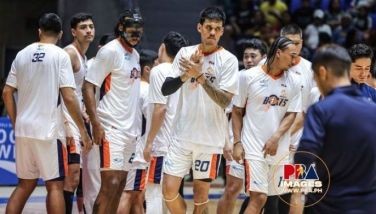A Renaissance Woman
DZRH should be warmly commended for its interviews of National Artists, with Lisa Macuja Elizalde conducting them. Here is an extended version of Lisa’s interview of me on my late sister Leonor Orosa Goquingco, National Artist for Creative Dance.
The Renaissance Man in our family was a woman, namely, Leonor. The genes she inherited must have made her so. Her parents were valedictorian and salutatorian in the UP
Leonor, H.S. valedictorian who bested 300 students, was the first summa cum laude graduate (BSE) of St. Scholastica’s College, English and literature major. Her entrance and comprehension tests in
Alejandro R. Roces wrote that of all our National Artists, Leonor encompassed the greatest number of artistic fields.
Leonor wrote essays, poems, critiques; her authoritative articles have appeared in Dance magazine, NY; Enciclopedia Dello Spettacolo,
When painter H.R. Ocampo saw Leonor’s sketches and drawings, he told her she should have been a visual artist. She did a sculptured bust of her father, and often designed the costumes and stage sets for her dance creations.
As actress, she was Oparre in
Leonor, eligible for an A.A. Degree in piano, played such pieces as “Rustle of Spring” and “Claire de Lune”.
She studied ballet with Luva Adameit, and later, with the world’s greatest masters in NY. The stage was a big blur to Leonor’s very poor eyesight, contact lenses not being in vogue then. Yet NHI chairman Ambeth Ocampo called her “the greatest Filipino dancer”; Nick Joaquin wrote: “she was a great dancer before she turned to choreography”.
When Leonor was only 16, she danced as a Roman warrior who fought valiantly, got wounded and had a profoundly moving death scene. The dance merely provided the intermission for a piano recital but the resounding applause, the lusty clamor for a “repeat” was the most sustained I had ever heard. (In deference to the recitalist, Leonor did not give an encore.)
In the early 50s, when Leonor danced as the Tikling bird in frenzied tempo — this in NY’s American
Leonor also danced at NY’s Kaufmann Auditorium, “I” House and
Returning from NY, she taught ballet and directed musicals, e.g., “Carmen” which starred Cristina Castañer (now Mrs. JPE) for
Although incredibly versatile — she was writer, playwright, visual artist, actress, dancer, pianist, ballet teacher, theater director — she is best known as choreographer.
In her teens, she created a ballet along Javanese styles for an
Also in 1940, her “Maria Clara and the Leper”, the first choreography to themes from Rizal’s Noli to her own storyline, so moved VP Sergio Osmeña that he exclaimed: “Bonito! Bonito!” “Trend: Return to Native” traced the history of native dance styles to her original choreography, ending with sports-avant garde for those times.
In 1957, Leonor’s “Firebird” to Stravinsky’s music, “Clowns” to Meyerbeer’s” ended with a completed Noli Dance Suite which included Elias and Salome, La Festejada and “The Gossips”, this described by Carmen G. Nakpil as a “wise, witty and wicked satire as trenchant as a Dorothy Parker couplet”.
Leonor’s magnum opus “Filipinescas: Philippine Life, Legend and Lore in Dance”, which drew raves on its five vastly successful tours to Europe, Russia, SA and the US, is variously described as “an epic,” “a saga,” “a synthesis of history, legend and tradition” to her own storylines. While retaining the basic folk essence and form, “Filipinescas” is replete with Leonor’s creative, stylized, theatricalized innovations, including her exploitation of the inherent virtuosity — the frenzied speed — in the Tinikling.
Her countless trailblazers are the first explicit depiction of the cockfight, the first choreography of Philippine Lenten practices (flagellation, et al), native games, the fiesta, the introduction of Christianity, the religious procession.
Wrote Nick Joaquin: “Tomorrow’s Philippine dancers will be specially indebted to Leonor Orosa who showed how Philippine dance can express the drama of our lives, and who created the mold in which it is now presented. Filipinescas is the peak: in this resumé of Philippine culture from pagan to modern times, the native dance has been brought to its highest stage of development. No further progress in this direction seems possible.”
During the interview, the ever-gracious, mentally-honest Lisa acknowledged her indebtedness to Leonor’s creative, pioneering innovations, including among many others, Tinikling on toes which was done in Filipinescas’ brief revival.
- Latest
- Trending




























